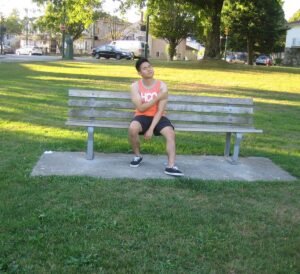Muscle soreness after engaging in exercise is considered common. The sore muscles typically indicate overexertion and can occur among both beginners and experienced individuals. The treatment for muscle soreness can help reduce the pain and promote the healing process. In some cases, this will allow the individual to continue exercising as soon as possible. A doctor should be consulted if the muscle soreness in the muscles does not seem to go away after 7-10 days.
Steps in managing muscle soreness

- The affected muscles must be allowed to rest. Always bear in mind that rest is vital to allow the muscle fibers with enough time to heal properly. The individual should avoid straining or exercising the muscles until the muscle soreness eventually subsides.
- The affected muscle should be massaged to help restore the flow of blood and loosen them up. All you have to do is to mildly rub or press on the muscles using your hands or you can utilize an electric massager. If possible, the individual should set an appointment with a qualified masseuse.
- Provide the individual with a pain medication. A mild over-the-counter medication such as acetaminophen or ibuprofen to help reduce the muscle soreness and pain. Just remember not to take too much ibuprofen since it can irritate the stomach lining.
- Place an ice pack over the sore muscles for the initial 24-72 hours. This will help reduce delayed onset muscle soreness and in case they were injured, the application of ice will minimize the inflammation. If possible, an ice bath is also recommended. After long period of applying ice, you can apply heat. By enrolling in a first aid class, you can learn the effectiveness of ice and heat on injuries.
- Soak in a shower or hot tub or simply apply a hot water bottle on the sore muscles. The heat will dilate the blood vessels, thus restoring the flow of blood as well as relaxing the muscle. The individual should drink plenty of water to avoid dehydration if he/she will opt for a spa or steam room.
- Perform mild exercises and stretch gently the muscles. The mild exercises such as yoga, walking or swimming can prevent the muscles from tightening and causing pain. Avoid strenuous exercises such as resistance training, weightlifting or high-impact cardio since they can worsen the muscle soreness.
Important tips to bear in mind
The ideal way to prevent muscle soreness, the individual should gradually build up increased activity. It is best to include warm up and mild stretching as part of the routine.
Always stick with a healthy snack after the exercise. Select foods that are rich in protein and carbohydrates such as lean meats and a bagel. Snacks must be eaten within 15-60 minutes after the exercise routine since this is the period where the body will effectively process the carbohydrates and proteins.
